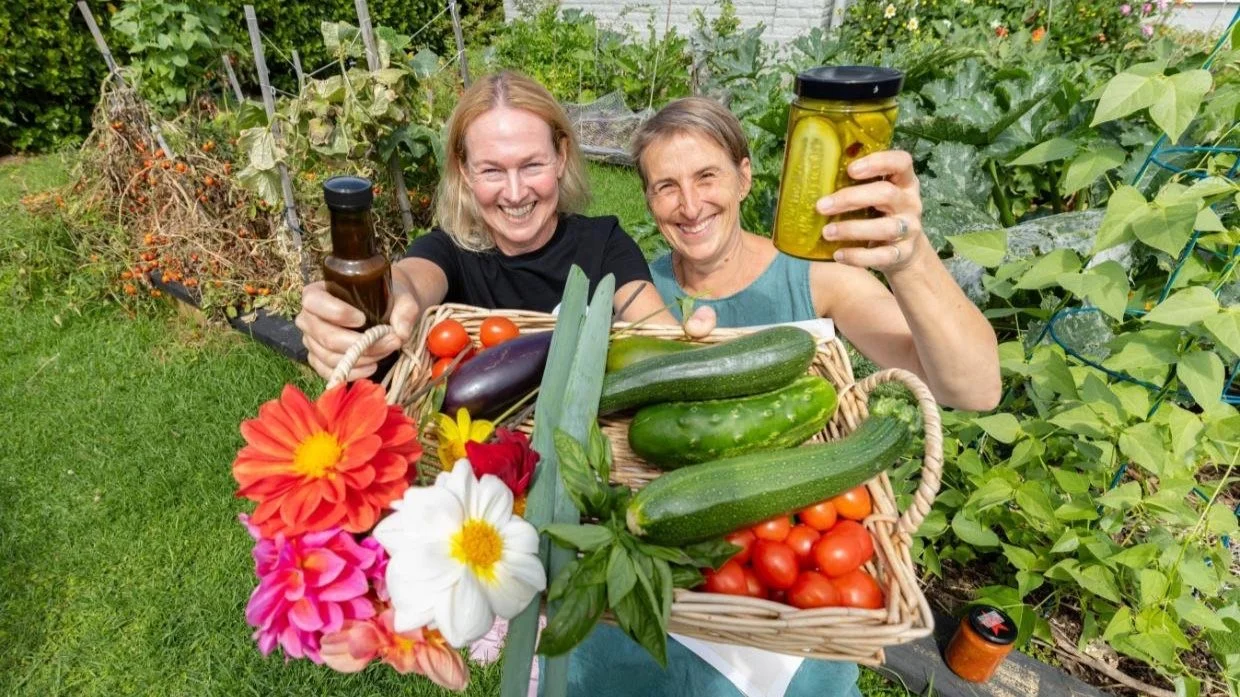A Crop Swap Road Trip Across Taranaki
Crop Swapping - A grassroots initiative where people exchange homegrown produce and homemade goods.
Taranaki, New Zealand, is known for its breathtaking landscapes and tight-knit communities. Crop Swap brings together backyard gardeners, home bakers and food foragers for swapping and sharing high quality local food on a regular basis.
In September 2013 Franziska Hunerbein set up Taranaki’s first Crop Swap in Merrilands Hall in New Plymouth. Now a nationwide movement, Crop Swaps are regular meetings with a table set up, where people pile up their surplus home-grown produce and garden-related goods to give away.
Participants can then take what they need, with no money changing hands. In 2023, Franziska handed over the flourishing network, Crop Swap Aotearoa, to Sustainable Taranaki to help it continue to grow.
Since Taranaki is where this initiative first began, we’ve become a hub for crop swapping. For those living in or visiting Taranaki, embarking on a crop swap road trip offers a unique way to explore the region, meet new people, and discover creative culinary uses for fresh, local produce.
Jump back to mid May this year when Crop Swap Aotearoa received a message from a Taranaki Crop Swapper who toured the Taranaki region with the core focus of finding and experiencing Crop Swaps around the mountain.
Beginning with those closest to home in the Opunake area, they started their journey. And as interest grew, so did the travels, leading them to various swaps across the region. What was the key outcome of this adventure? Each Crop Swap has its unique charm, and the experiences they had enriched their lives in unexpected ways. Here are some of the Crop Swaps they visited and a tips they picked up for each one.
Okato Crop Swap
Experience: Arrived as the only participants, likely due to a listing error. Despite this, they donated their produce to the local veterinary clinic.
Tip: Verify times before you go. Local contacts can be invaluable.
Egmont Village Crop Swap
Experience: The swap takes place in the morning. The small group we met was full of laughter and camaraderie.
Tip: Morning swaps can be a delightful way to start the day with fresh produce and new friends. (images below)
Manaia Crop Swap
Experience: Swapping starts at 10 AM sharp. Unlike other swaps where people arrive and mingle before swapping, here the action begins right on the dot.
Tip: Be punctual to get the best selection and meet more people.
Lepperton/Hurangi Crop Swap
Experience: The journey to this swap involved getting lost multiple times. They eventually found Hurangi Hall, only to discover a massage class instead of a crop swap.
Tip: Always double-check locations and current activities before setting out.
One of the most exciting aspects of crop swapping has been the inspiration it provides for creative cooking. Our Crop Swap traveller found a recipe that incorporated all the ingredients gathered from Taranaki Crop Swaps around the mountain, turning them into a delicious relish. They labelled it "Crop Swap Relish”. Ingredients included:
Limes from Oakura
Kaffir lime leaves from Egmont Village and Mangorei
Green cayenne chilies from Mangorei, Egmont Village, and a rural school swap near Inglewood
This kind of creativity is a wonderful by-product of crop swapping, encouraging participants to experiment with new recipes and flavours.
A Crop Swap focused road trip through Taranaki is more than just an exploration of fresh produce—it's a journey into the heart of community spirit and creativity.
Despite some logistical hiccups, the experiences and connections made along the way were incredibly rewarding.
For anyone interested in sustainable living, gardening, or simply meeting new people, crop swaps in Taranaki offer a delightful and enriching adventure. So pack your produce, hit the road, and discover the joys of crop swapping in this beautiful region.
5 Ways you can support Crop Swap:
1. Participate Actively in a local Crop Swap
Bring Your Produce - Share your surplus fruits, vegetables, herbs, and other homegrown or homemade goods.
Engage with Others - Swap stories, tips, and recipes with fellow participants to build a stronger community.
2. Volunteer Your Time
Help Organise Events - Assist in setting up and managing crop swap events, from arranging tables to welcoming participants.
Promote the Swap - Use social media, community boards, and word of mouth to spread the word and attract more participants.
3. Donate Supplies
Provide Resources - Offer gardening supplies, seeds, containers, or even snacks and drinks for the events.
Create a Lending Library - Set up a small library of gardening books, magazines, and tools for participants to borrow and learn from.
4. Educate and Inspire
Host Workshops - Share your knowledge on topics like sustainable gardening, composting, preserving, and cooking with fresh produce.
Offer Demonstrations - Show practical skills such as seed saving, pruning, or making homemade preserves.
5. Create a Support Network
Form a Group - Start a social media group or email list to keep in touch with other crop swappers, share updates, and organize future events.
Collaborate with Local Organisations - Partner with community gardens, schools, libraries, and environmental groups to broaden the reach and impact of crop swaps.
Supporting a crop swap can be a fulfilling way to contribute to your community, promote sustainability, and enjoy the benefits of fresh, local produce.
Crop Swapping: A Community for Everyone
One of the greatest aspects of crop swaps is their inclusivity. Whether you have a bountiful garden or just a few pots on your balcony, crop swaps welcome everyone. They are perfect for anyone interested in gardening, sustainable living, or simply looking to meet new people.
Participating in crop swaps can be a gateway to forming lasting friendships and becoming part of a supportive community network. The shared passion for homegrown produce and homemade goods fosters a sense of belonging and mutual support.








